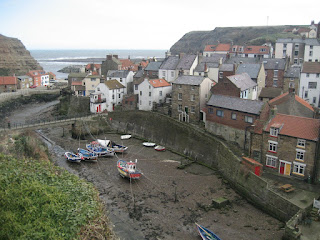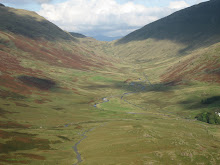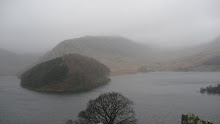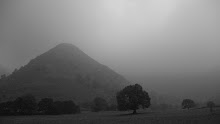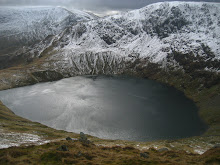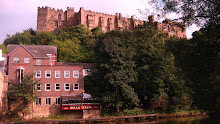Pic 1 - High Spy from Castle Crag
Pic 2 - On the summit of Castle Crag
Pic 3 - Borrowdale.
I recently paid a visit to Castle Crag up north in Cumbria. Although it is not classed as a mountain with it only being 951 ft in height I have to say that is one of the most beautiful I have climbed in the Lake District . It is quite impressive in appearance displaying forest, rock face and beautiful pasture on its lower slopes, it also has a number of caves with the most famous being Millican Dalton's Cave named after Millican Dalton , the eccentric and self styled "Professor of Adventure" whom used the cave as his summer home from the 1920's until shortly before he died in 1947. It was originally called High Hows Quarry and it lies to the west of the beautiful and crystal clear waters of the River Derwent which winds its way down from Great Gable via Seathwaite Fell. I parked in the lovely hamlet of Stonethwaite and walked the short distance along the river bank with the sheep and cattle until I came to the footpath that leads up the southern slope, it's a fairly easy climb which took me to the top of another hill that afforded wonderful views back into the valley of Borrowdale , such rich and fertile land. From this point I noticed some awesome wild camping spots with cool views to wake up too. As I climbed the sty to make the final approach to the summit, my mate Lee spotted one of our rare native Red Squirrels having his breakfast so we spent some time watching him before eventually climbing to the top of the crag itself. The final approach is through some massive slate scree banks where a zig zag path has been created up to the top, from this point you get a magnificent view looking onto High Spy which appears to be vertical as you face it. Once on top of Castle Crag you are presented with such wonderful views down into Borrowdale and also North over Derwent Water to Keswick and the big lump of Skiddaw at it's rear with some of the higher peaks still holding onto their snow. On top of the crag there is a war memorial dedicated to the men of Borrowdale whom fell in WW1
The day I climbed it was quite pleasant and warm although a tad cloudy so I managed to bag Castle Crag and have a wander down the Langstrath Valley on the other side of Stonethwaite before the weather deteriorated. The highlight of the day however was not Mr Red Squirrel nor the magnificent scenery but a Robin Redbreast on the top of Castle Crag whom flew right up to my feet and allowed me to share my sandwich with him.







































